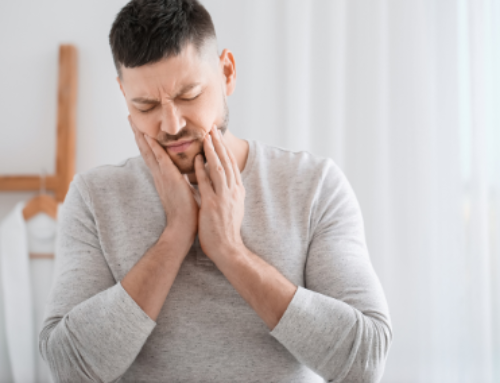Temporomandibular joint disorders, commonly referred to as TMJ or TMD, are conditions that affect the jaw joint and the surrounding muscles. While these disorders are often associated with jaw-related symptoms, such as pain, clicking, or difficulty in opening and closing the mouth, there is growing evidence suggesting a potential link between neck issues and TMJ problems. In this article, we will delve into the complex relationship between neck conditions and TMJ disorders, exploring how they might be interconnected and what steps individuals can take for relief and management.
Understanding the Temporomandibular Joint (TMJ)
The temporomandibular joint (TMJ) is a complex hinge joint that connects the jawbone (mandible) to the skull near the temples. It plays a vital role in essential functions such as speaking, chewing, and swallowing. A range of factors, including genetics, trauma, dental issues, and habits like teeth grinding, can contribute to TMJ disorders. However, recent research suggests that problems in the neck and cervical spine may also be relevant.
The Potential Link Between Neck Issues and TMJ Disorders
- Muscular Tension: One of the primary connections between neck issues and TMJ problems is muscle tension. When the muscles of the neck, shoulders, and upper back are tight or imbalanced, it can affect the alignment and function of the jaw. This tension may be due to poor posture, stress, or even injuries.
- Nerve Impingement: The nerves in the neck and jaw are intricately connected. Conditions like cervical spine misalignments or herniated discs can lead to nerve impingement. Nerve compression in the neck may influence the nerves that control jaw movement and sensation, potentially contributing to TMJ symptoms.
- Posture and Alignment: Maintaining proper posture is essential for overall musculoskeletal health. Poor posture, especially forward head posture, can place strain on both the neck and jaw. Over time, this strain may lead to TMJ discomfort.
Symptoms That Overlap
Neck issues and TMJ disorders share some overlapping symptoms, making it challenging to pinpoint the exact cause of discomfort. These shared symptoms may include:
- Pain: Individuals with both neck problems and TMJ disorders may experience localized or radiating pain in the neck, jaw, face, and head.
- Limited Mobility: Restricted range of motion in the neck can affect the ability to open or move the jaw comfortably.
- Headaches: Chronic headaches, including tension-type headaches, are common complaints in individuals with neck issues and TMJ disorders.
- Ear Pain and Ringing: Earaches, tinnitus (ringing in the ears), or fullness in the ears can be associated with both neck problems and TMJ conditions.
Management and Treatment Options
Recognizing the potential link between neck issues and TMJ disorders is the first step toward effective management. Here are some strategies that individuals can consider:
- Consultation with Healthcare Professionals: Seek evaluation and guidance from healthcare providers, including dentists, chiropractors, physical therapists, and orthopedic specialists, to assess and address both neck and TMJ issues comprehensively.
- Physical Therapy: Targeted exercises and stretches prescribed by a physical therapist can help improve neck and jaw function, reduce pain, and enhance overall posture.
- Chiropractic Care: Chiropractors can assess and treat misalignments in the neck and spine, which may alleviate both neck and TMJ symptoms.
- Stress Management: Techniques such as relaxation, meditation, and stress reduction can help manage muscle tension, benefiting both the neck and jaw.
- Ergonomic Adjustments: Make ergonomic changes in your workspace and daily habits to improve posture and reduce strain on the neck and jaw.
- Orthodontic and Dental Interventions: In some cases, orthodontic or dental treatments may be necessary to address TMJ issues, including bite adjustments or splints.
While the link between neck issues and TMJ disorders is complex and multifaceted, it is increasingly recognized by healthcare professionals. Addressing both aspects comprehensively through a combination of medical assessments, therapies, and lifestyle modifications can provide individuals with a more holistic approach to managing their symptoms and improving their overall quality of life. Seeking timely care and understanding the interplay between these conditions is essential for finding effective relief from both neck and TMJ problems.
A Natural Treatment Method for Neck Issues and TMJ
The Blair Chiropractic Technique is a specialized approach that naturally and effectively treats both neck issues and TMJ (Temporomandibular Joint) disorders. This technique focuses on the precise correction of misalignments in the upper cervical spine, particularly the atlas (C1) and axis (C2) vertebrae. These upper cervical misalignments can have far-reaching effects on the body, including the neck and jaw regions.
In the case of neck issues, the Blair Chiropractic Technique aims to identify and correct misalignments that may be contributing to muscle tension, pain, and restricted range of motion in the neck. By restoring proper alignment in the upper cervical spine, this technique can help alleviate neck discomfort and improve overall posture, which is crucial in maintaining musculoskeletal health.
And, by addressing any misalignments in the upper cervical spine that may be affecting the nerves and muscles involved in jaw movement, Blair Chiropractic care seeks to reduce TMJ-related symptoms. Patients who experience jaw pain, clicking, or limited jaw mobility may find relief through this precise and gentle chiropractic approach.
If you are experiencing neck issues and TMJ, please contact a Blair chiropractor in your area for an appointment.
Author: Vic Belonogoff
A Blair Chiropractic doctor helped heal vertigo, among other conditions that Vic Belonogoff suffered from, and it gave him his life back. He continues to see an upper cervical chiropractor as a preventative measure. Vic Belonogoff is passionate about upper cervical chiropractic and how much it helps patients.



